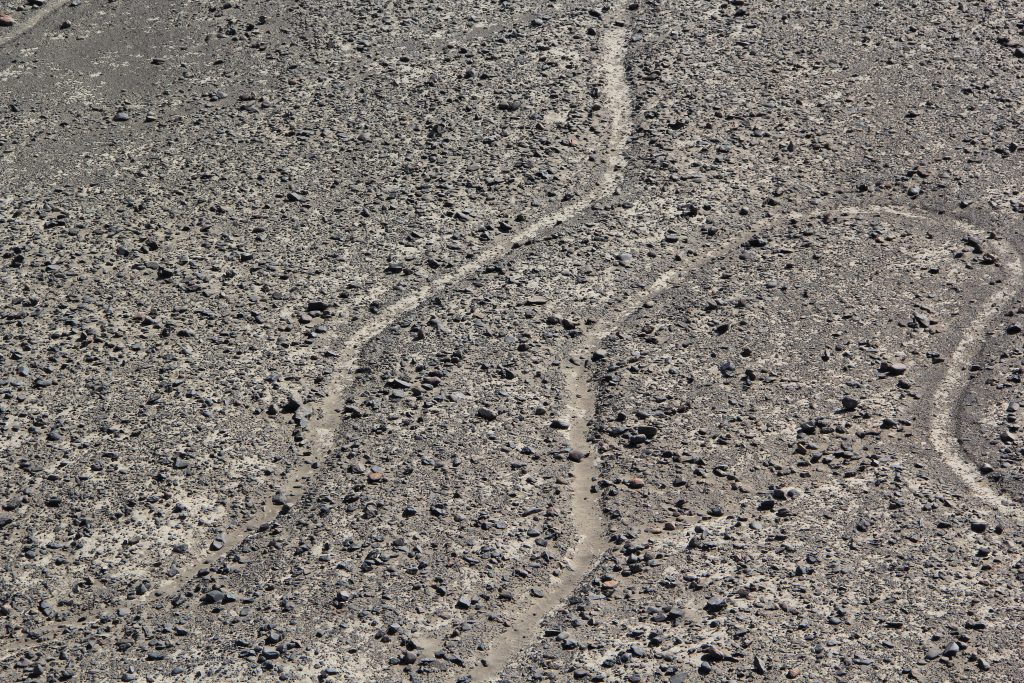Across the different periods of ancient history, an enduring theme draws students and aficionados alike into the study of the past: ancient mysteries. The geoglyphs in southern Peru, including the famous Nazca Lines, continue to intrigue people across the world today. No one knows for sure why they were constructed, but during a recent visit to the region, I had the opportunity to marvel at these fascinating designs.
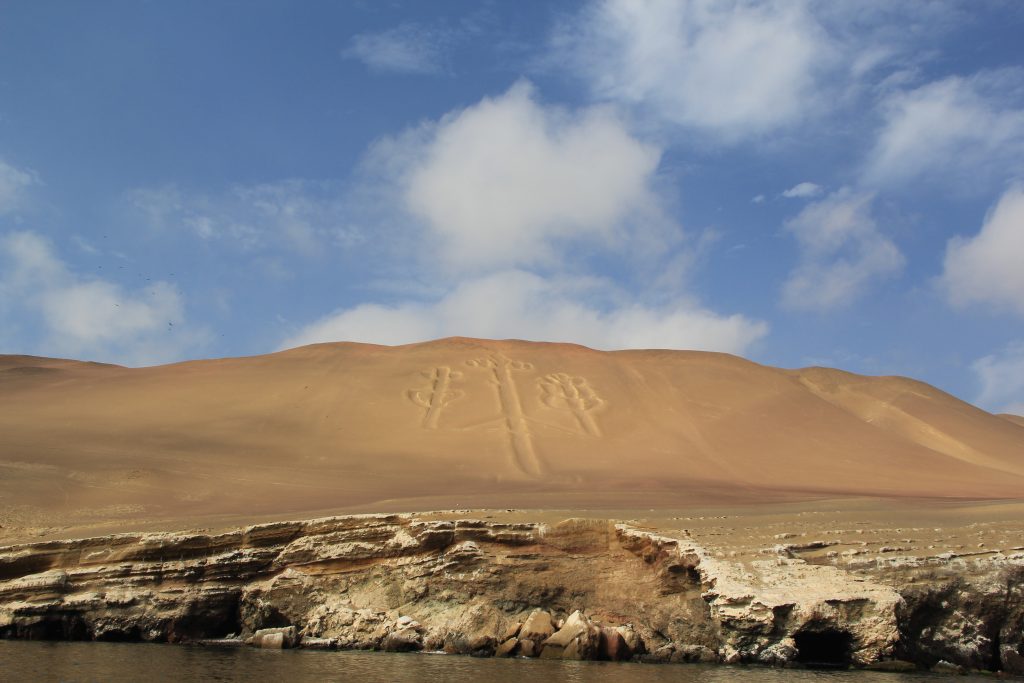
The Paracas Candelabra
The Paracas culture flourished in the area that is now southern Peru from approximately 800 BCE to 100 CE, a time corresponding to the founding of the Roman Republic to the reign of Trajan. Their customs included mummification, skull trephination, and binding infants’ skulls to create different head shapes. They lived on the Pacific Coast in a desert climate, like much of coastal Peru.
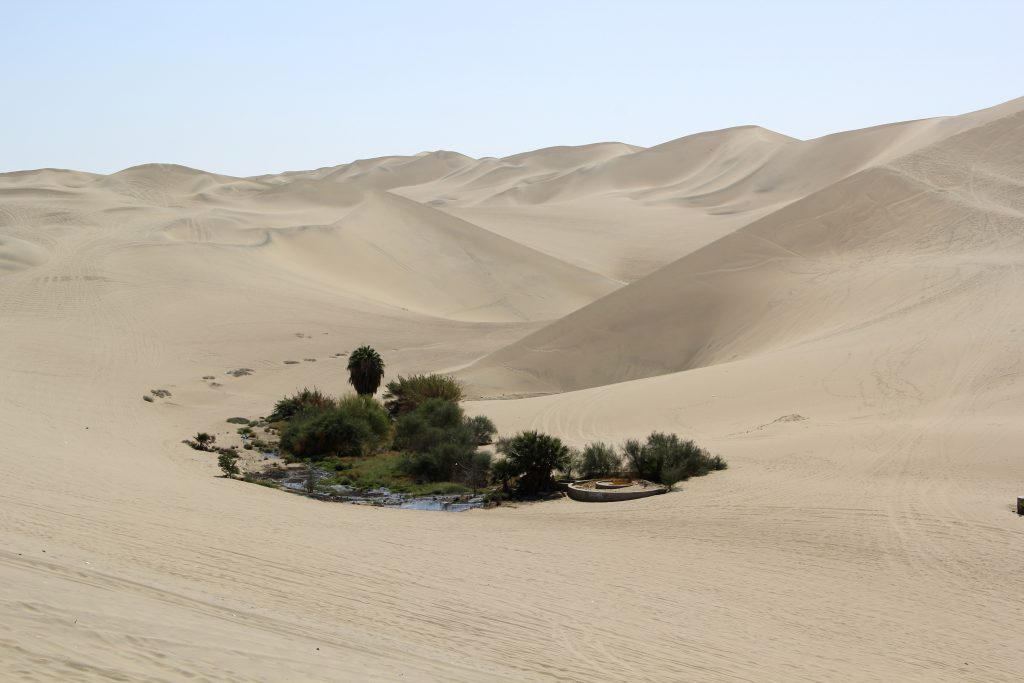
A small desert oasis located near the town of Huacachina. This part of the coastal desert has sand dunes that resemble those of the Sahara. Image © Caroline Cervera.
The Islas Ballestas, a group of islands off the coast of Peru, are a popular attraction for tourists due to their penguins, dolphins, and sea lions. However, they are also home to a fascinating geoglyph that confounds scholars today. There are many theories about its purpose, but there is no definitive answer. The geoglyph carved two feet into the soil and standing almost 600 feet long (182 m), can be seen up to 12 miles (19 km) away at sea.
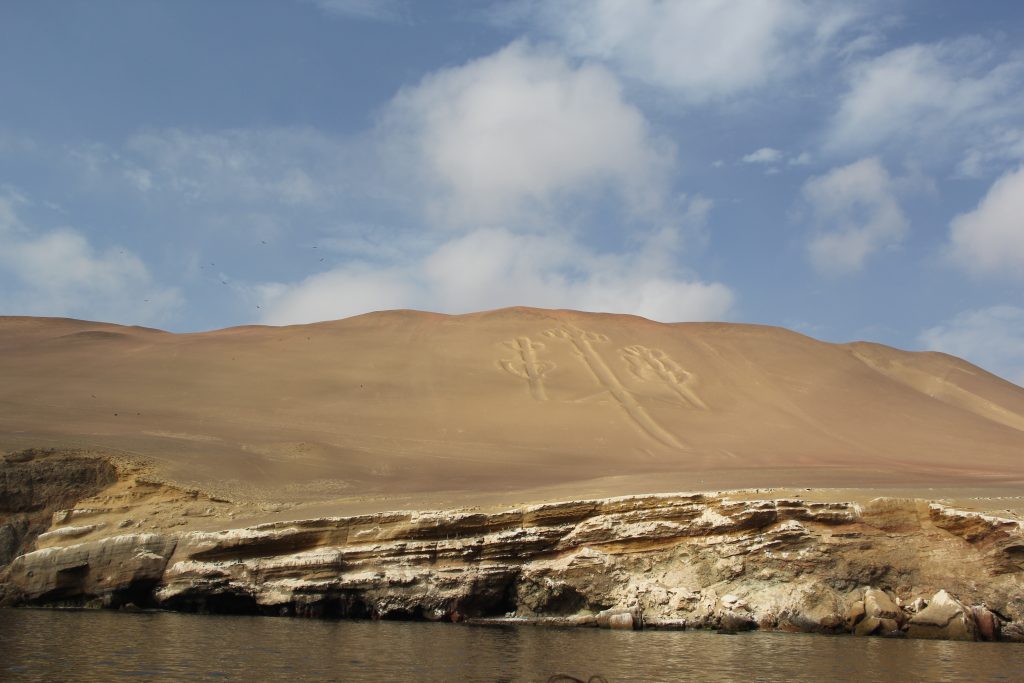
Approaching the Paracas Candelabra by sea. Image © Caroline Cervera.
The geoglyph looks similar to a trident or candelabra. Some posit that it is an appearance of the Mesoamerican world tree motif found in many cultures to the north, while others assert that it was used as a tool for sailors coming in from sea.

The Paracas Candelabra. Image © Caroline Cervera.
Why was it created? Was it a type of navigation tool? Was it made for religious reasons? Although there is no consensus on the purpose now, archaeologists have found pottery dating back to 200 BCE, during the Paracas period. This is evidence that this island, whatever its purpose, has an ancient past that may be connected to a geoglyph whose meaning has been lost to time.
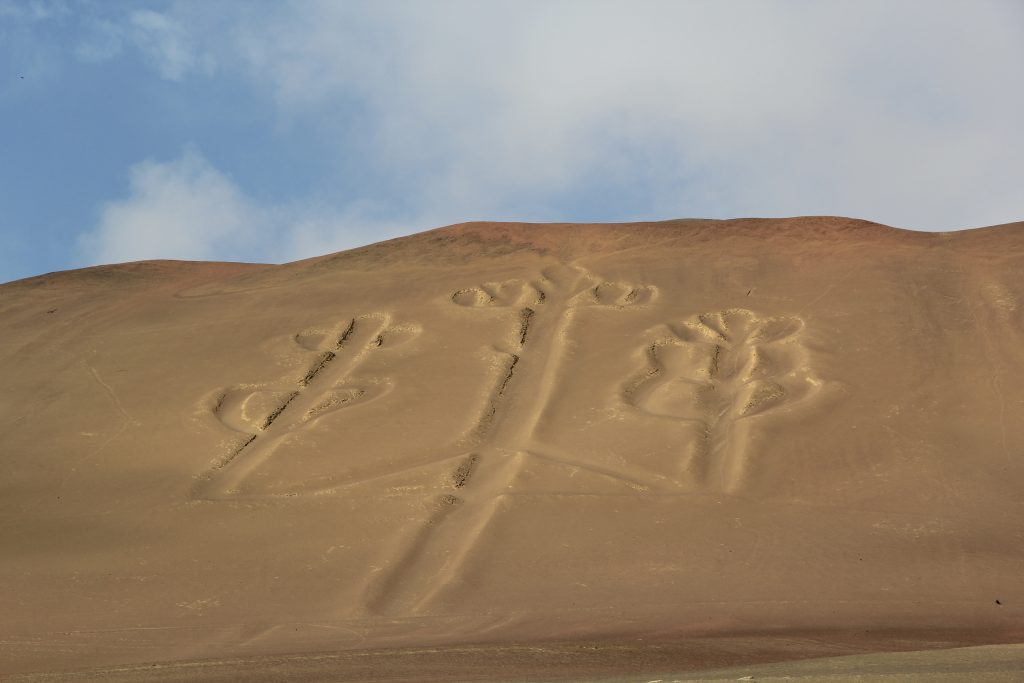
A closer look at the Paracas Candelabra. Image © Caroline Cervera.
The Nazca Lines
The Nazca Lines have been the subject of much speculation and theorising since they were rediscovered by the modern world in the 1940s. The lines are massive designs created in the Mars-like desert by removing the iron-filled rocks at the surface to reveal lighter-colored soil about five centimetres deep in a manner that creates patterns that can be seen from above. The best way to see the lines is by plane, but I chose the safer route and saw them from nearby miradores, hilltops or staircases that allow you to ascend high enough to see several of them. Some of these miradores are essentially staircases in the middle of the desert. It was difficult to even able to climb the staircase in the heat, so it is a wonder that people voluntarily created such large structures in such a barren, inhospitable environment.
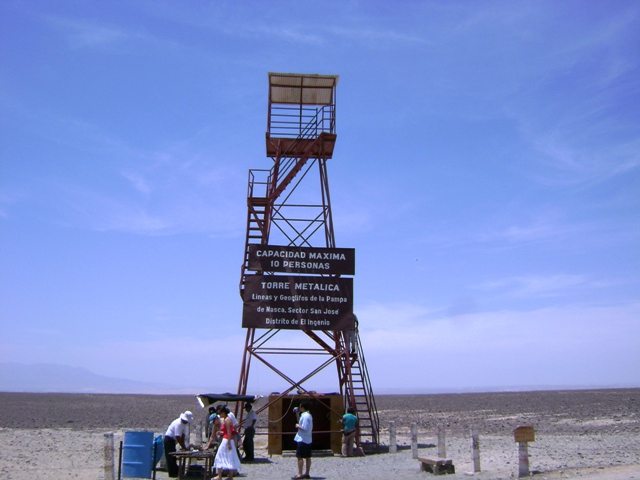
The lone mirador in the desert used to view the Nazca lines. Image © Caroline Cervera.
The spiral is a very common symbol in this part of the world, frequently signifying the balance of opposing dualistic forces in nearby cultures. Pachamama, an important religious concept and deity in various ancient Peruvian cultures and even today, is associated with the spiral. This line is visible from a hilltop in the desert.

The spiral begins in at a central point and infinitely winds outwards into eternity. Image © Caroline Cervera.
There is also a grid visible from the same hill as well.
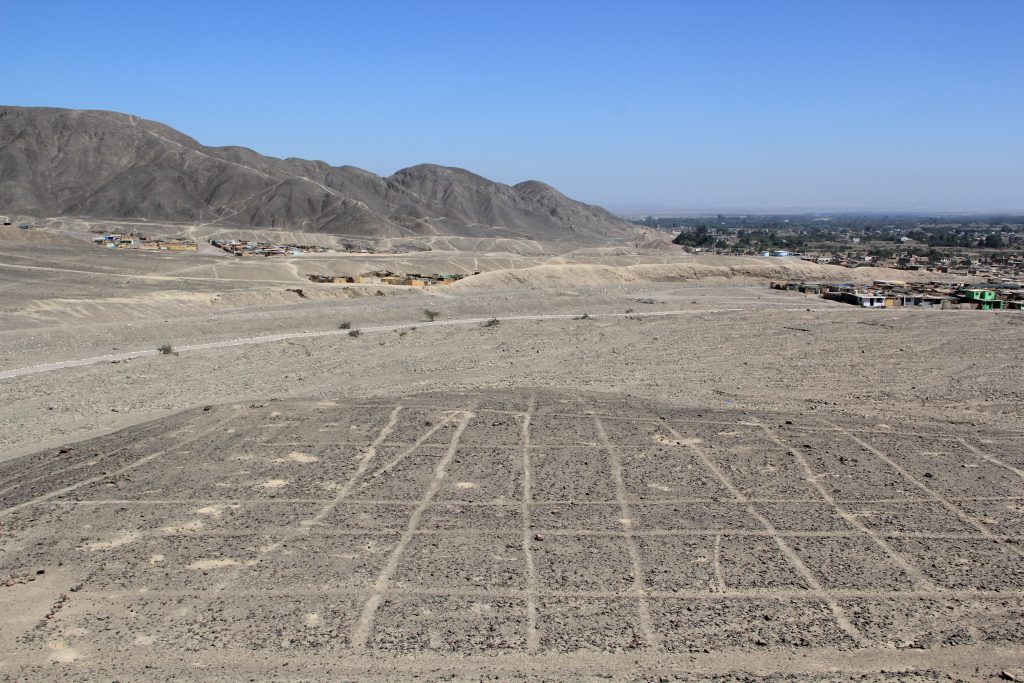
An ancient grid created from the stones in the desert. Image © Caroline Cervera.
While there is no consensus about their purpose, many have proposed fascinating theories about the lines. The tour guide told our group that the word Nazca means “thirsty and starving” in the local ancient language. While the area is a barren desert now, it was lush enough to support the people of the Nazca civilisation in ancient times. As the climate changed, it became more and more difficult for them to survive there. This theory suggests that the ancient people created the lines to signify their piety to gods in the sky and ask for water. Scholars have also proposed theories about the lines mapping constellations or other astronomical phenomena. Again, there is no academic consensus on the reasons, but it is intriguing to wonder why the Nazca people put so much effort into designs that are invisible when standing on the surface.
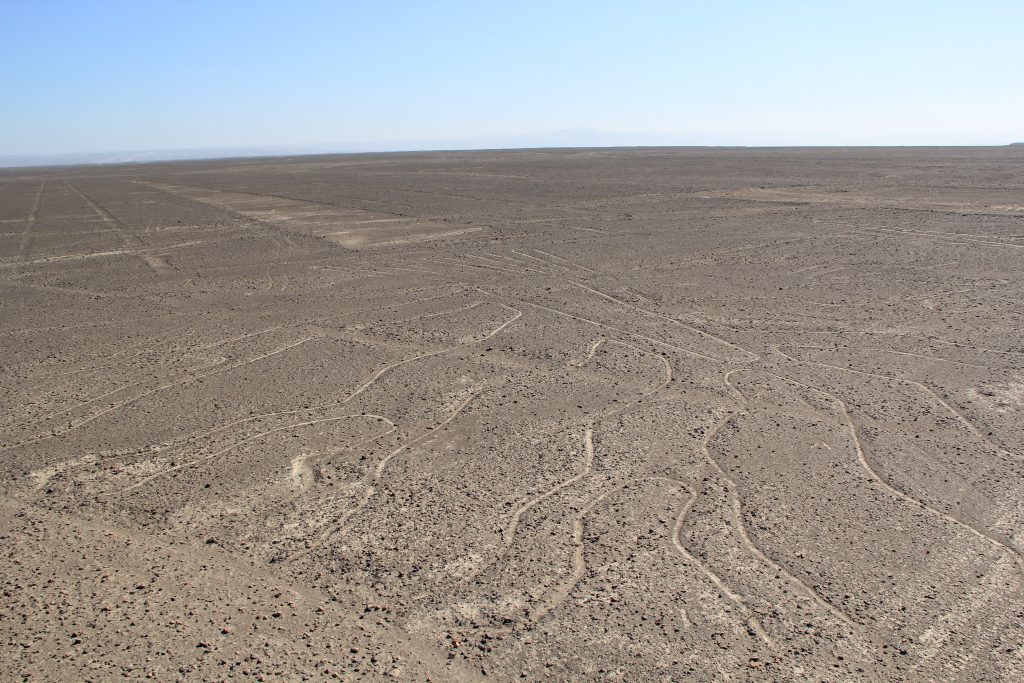
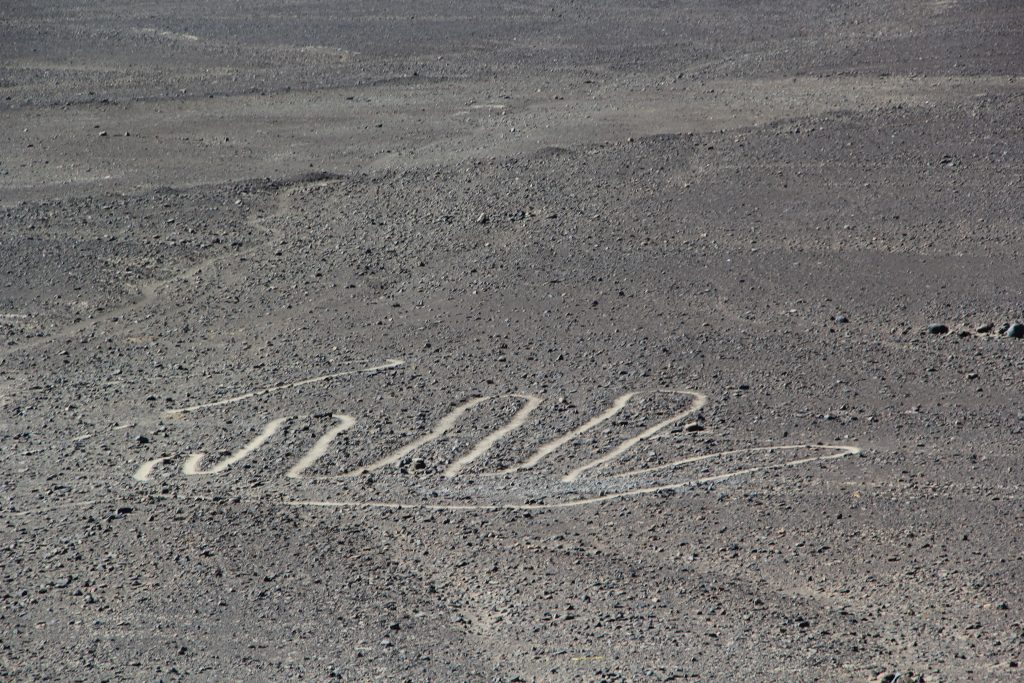
A hand design. Image © Caroline Cervera.
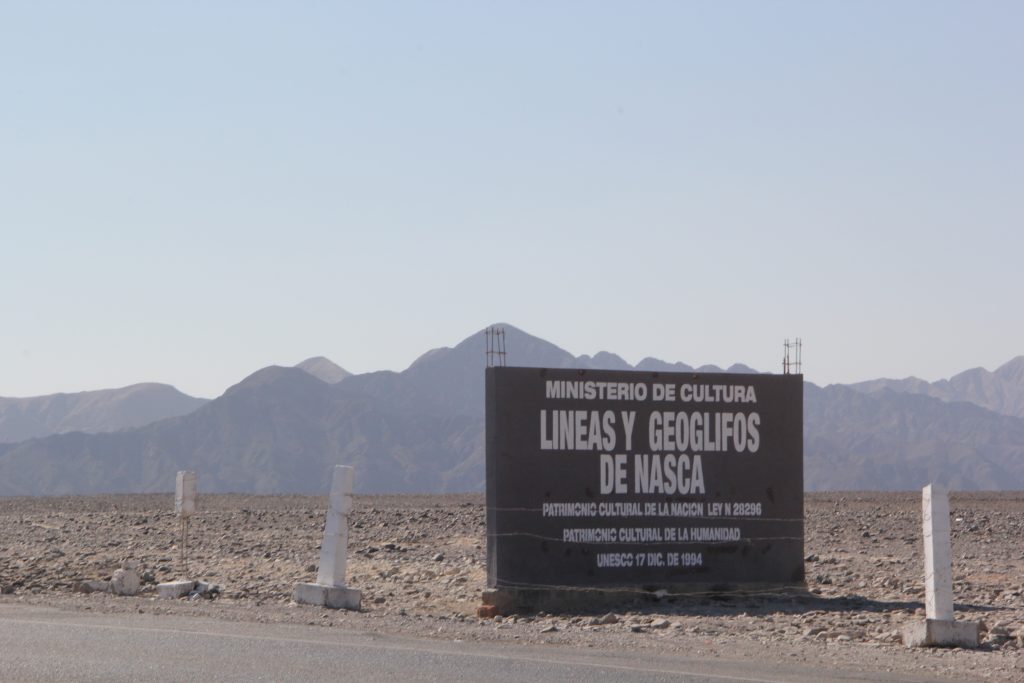
The mountains surrounding the vast expanse of desert where many of the lines are located protect the lines from most wind erosion. Image © Caroline Cervera.
The lines are even more fascinating due to the unique combination of environmental factors that allow them to survive today. The Paracas Candelabra is located on the leeward side of an island which receives little to no wind and rain, making it the perfect environment for preserving such a design. The Nazca Lines are located in a desert and are surrounded by hills in all directions.
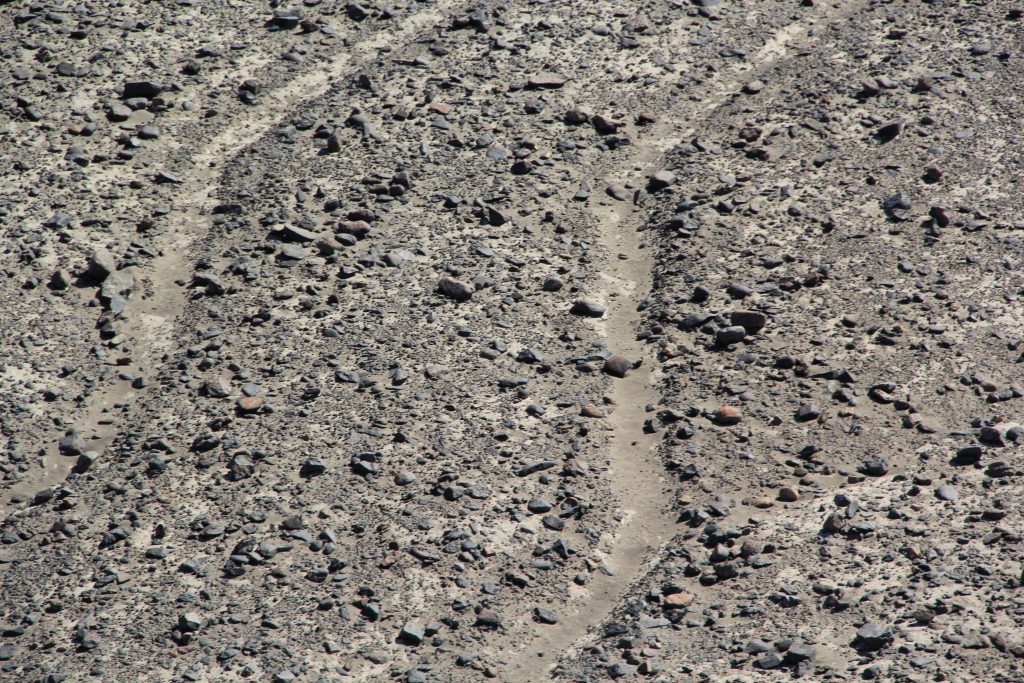
The lines were created by removing the iron-rich rocks at the surface to reveal the dirt beneath, which has a different color. In this close-up view, the shallowness and fragility of the lines are visible. Image © Caroline Cervera.
Still, the sites are not immune to danger. The lines are very shallow compared to the deeper Paracas Candelabra and have the potential to be damaged by vandals, natural disasters, and erosion. We may never know the true purpose of these lines, but their beauty must be preserved. The designs are fortunately under the protection of the government and in the case of the Nazca Lines, UNESCO, which both work to preserve these unique features for generations to come.
